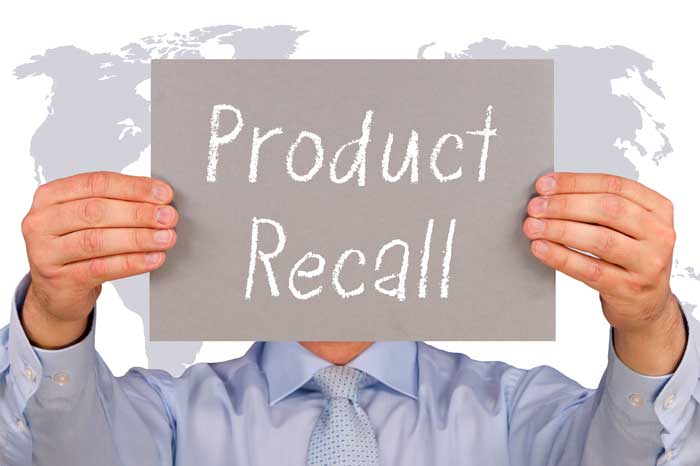Blog
Product Recall Insurance: What It Is and Why You Need It
Product recall insurance is designed to reimburse companies for the financial loss incurred when a product is recalled from the marketplace. Coverage is triggered when it is determined that a product is, or is likely to become, hazardous to the public.

The most widely publicized recalls typically involve food companies whose product has been contaminated. According to the United States Consumer Product Safety Commission, dozens of products may be recalled in any given month.
And there are high-profile cases, too; recently in September 2016, Samsung implemented a voluntary recall and exchange program for some Galaxy Note7 smartphones due to overheating and resulting safety risks.
Although a recall is quite costly, the good news is that much of these costs may be covered by a properly structured product recall insurance policy.
Who Needs Product Recall Insurance?
Product recall insurance is strongly recommended for any company whose product could result in bodily harm. Many consider it an absolute necessity for food and beverage or consumer packaged goods companies.
Anything from toys and smartphones to bottled water and medications are susceptible to recall. Because even the strictest of safety measures can be insufficient, it is best to examine your supply chain and work with your broker to discuss the risks specific to your company.
What Expenses Are Covered with Product Recall?
When discussing the need for a policy, it is essential to understand the scope of the costs you are likely to incur and if/how they will be covered. Product recall policies have two parts: First-party expenses (also known as direct expenses) and third-party expenses.
First-Party Expenses
First-party expenses are what initially come to mind when we think about a product being recalled. The process begins with notification, including customers, retailers and distributors. In the event that your product is widely distributed and the public needs to be informed, notification costs alone can be high.
Other first-party costs include shipping the product back to your facility, destroying the goods in question and additional personnel required to facilitate the process. Warehousing costs may become an issue in the event that a company has already restocked, leaving no room to store recalled inventory.
You may be wondering about the cost to replace the defective product. This is certainly a first-party expense, but this cost needs to be addressed by endorsement. I will explore that aspect in a later section.
While these costs can certainly be expensive, the reputational damage sustained by a product recall can be more severe and much harder to quantify.
The Chipotle restaurant chain, which sustained an outbreak of E. coli in 2015, is still suffering from reduced sales, which many attribute to a still wary public. The cost of a PR firm to assist with restoring a company’s good name can be included in first-party costs as well.
Third-Party Expenses
When a wholesaler or vendor uses your product as a component of their product, such as a car part or food ingredient, these third parties will have expenses as well. These costs can include all of the previously mentioned direct expenses.
In the Chipotle example, had the contamination been traced to a supplier, it would have been that vendor’s policy that first responded to cover the losses sustained by Chipotle.
Product Recall Insurance Policies
Policies vary greatly depending on several factors. Territory coverage, for example, needs to include all locations where your product ultimately may be used. This may be limited to your immediate city or state but most likely should include both national and international coverage.
The potential for recall is yet another reason it is essential to track both your supply chain as well as your sales channels.
Perhaps more important than the distinction in territory is the policy language that triggers coverage. These triggers fall into two categories: mandatory and voluntary.
A voluntary recall occurs when a company discovers on its own that there is a potential problem and proactively initiates a recall. A mandatory recall is most often initiated by a governmental agency as a response to a reported problem.
Earlier I discussed replacing the recalled product. While this may seem like a logical expense, it is important to note that most policies do not automatically cover this cost.
Ensuring that your policy contains a “refund, repair or replace” endorsement will further limit your company’s out-of-pocket expense and can also aid in rebuilding goodwill with your client base.
In order to further mitigate the financial impact of a recall, it is suggested that business interruption also be added to your policy. This endorsement will capture the profits previously achieved from the sale of recalled products.
In Conclusion
Despite the best efforts of a company, products fall short of expectations. As discussed, the cost of a recall can be extremely expensive both in financial and reputational terms.
While it’s true that some general liability policies can provide a degree of protection, product recall is either severely restricted or more often excluded from a GL policy altogether.
Stand-alone product recall insurance can be the most effective way to mitigate this risk and should be discussed with a broker that specializes in this type of coverage.
Table of Contents











